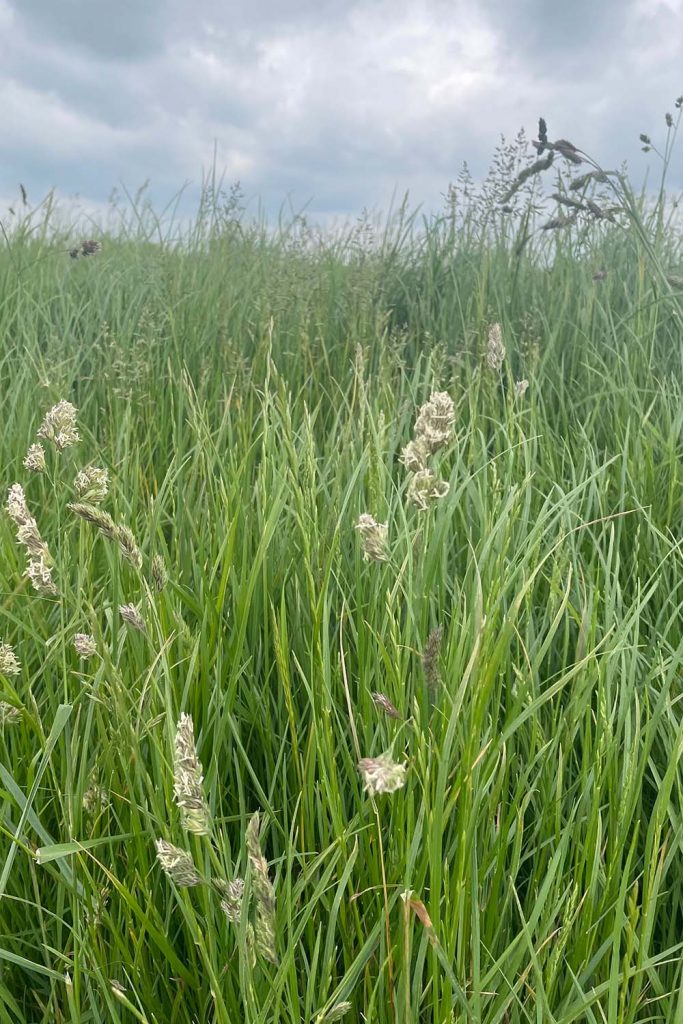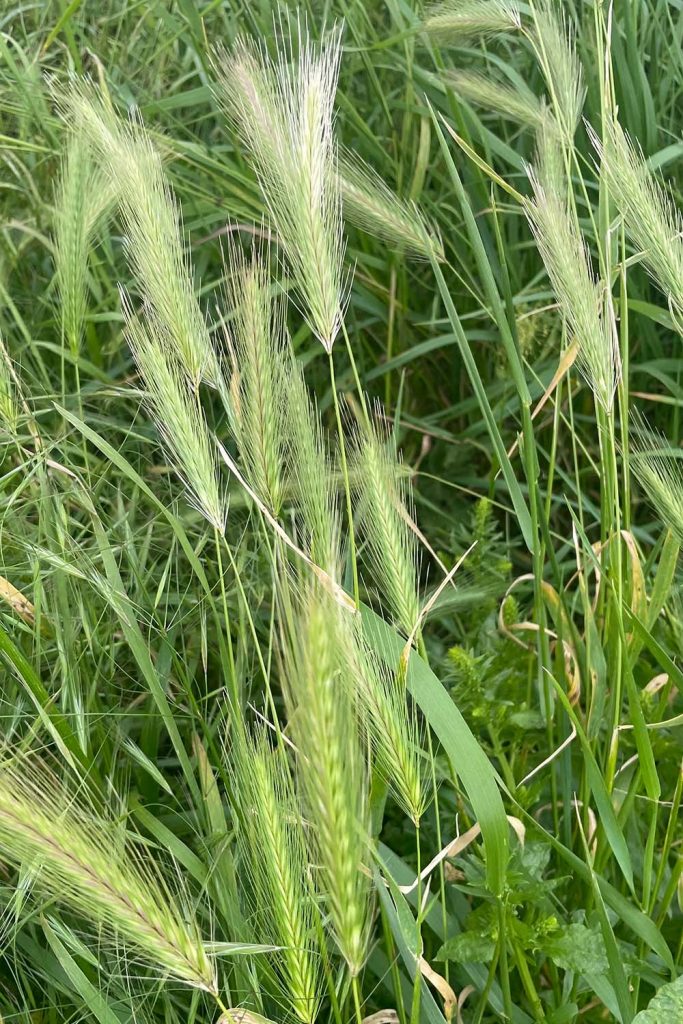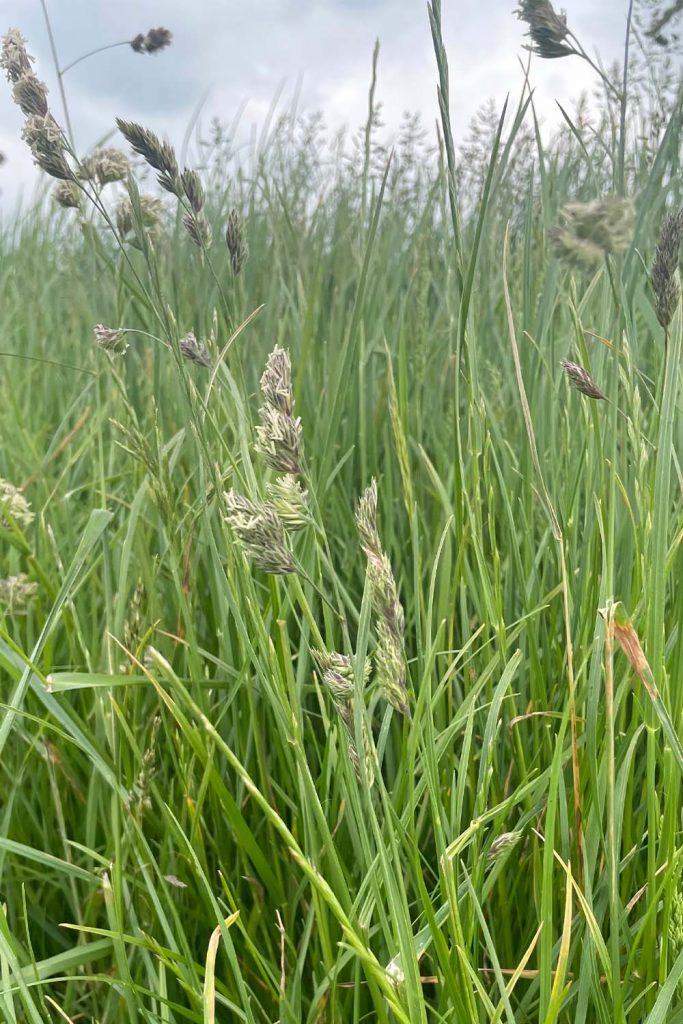The Best Grass for Clay Soil

Finding the best grass for clay soil can be a tricky business for gardeners. Clay soils are notorious for their poor drainage (often leading people to search for how to dry wet soil fast), compact structure, and difficulty supporting healthy lawn growth. We struggle with lots of clay in our gardens so I understand the struggle.
However, over time and with the right management clay can actually become one of the best mediums to grow plants and lawns on and with the right grass seed and proper care, you can transform your clay lawn into a vibrant, green lawn. In this post we’re going to look at the best choices for clay soils and provide tips for achieving the best results whether you are in the UK or US.
Understanding Clay Soil
Clay soil is composed of fine particles that pack tightly together, leading to poor drainage and aeration. This can cause issues for many grass species. However, by incorporating organic matter and other soil amendments, you can improve soil structure and create a more hospitable environment for grass roots.
Soil Testing and Preparation
Before planting your new lawn, conducting a soil test is the most important step. Soil testing kits are readily available at garden centres and will provide valuable information about your soil’s pH and nutrient levels. Knowing your soil conditions helps you select the best grass seed and determine the necessary amendments.
Adding organic matter, such as peat moss or compost, can significantly improve heavy clay soils. This process enhances drainage and provides essential nutrients, creating an ideal soil environment for grass growth.
The best grass for clay soil: grass seed

Selecting the right grass seed for clay soil involves considering several factors, including climate, sun exposure, and the specific needs of your lawn. Here are some excellent choices for both cool-season and warm-season grasses. In the UK we are usually looking for cool-season grasses (unsurprisingly!) but where you are in the US will
Cool-Season Grasses
- Tall Fescue: Tall fescue is a great choice for clay soil due to its deep roots and excellent drought tolerance. It performs well in full sun and can handle a wide range of soil conditions.
- Fine Fescue: Fine fescue varieties, such as red fescue, are known for their shade tolerance and adaptability to different soil types. They thrive in both well-drained soils and heavier clay soils.
- Perennial Ryegrass: Perennial ryegrass establishes quickly and provides a lush, green colour. It’s suitable for cool-season lawns and can handle the compact nature of clay soil.
- Kentucky Bluegrass: While Kentucky bluegrass prefers well-drained soils, certain varieties can adapt to clay soils. It is known for its vibrant lawn appearance and excellent disease resistance, but in the UK gardeners tend to opt for one of the above alternatives.
Warm-Season Grasses
- Bermuda Grass: Common Bermuda grass (Cynodon dactylon) is an excellent choice for warm-season lawns, particularly in areas with heavy clay soils. Its deep roots and drought resistance make it ideal for dry periods.
- St. Augustine grass: St. Augustine grass (Stenotaphrum secundatum) is another warm-season grass that can thrive in clay soil. It has good shade tolerance and is often used in front yards and backyards. It’s often referred to as Buffalo grass.
Planting and Maintenance Tips

Best Time of Year
For cool-season grasses, the best time of year to plant is early fall. This allows the grass to establish before the heat of summer. Warm-season grasses, on the other hand, should be planted in late spring to early summer.
Soil Preparation
Proper soil preparation is crucial for a healthy lawn. Till the soil to break up compacted areas and incorporate organic matter. Level the soil surface and apply a starter fertilizer to give your new grass the nutrients it needs to thrive.
Seeding
Using a seed spreader, evenly distribute the grass seed mixture over the prepared soil. Opt for seed mixtures that include drought-resistant varieties for the best lawn seed. Cover the seeds with a thin layer of topsoil to protect them from birds and help retain moisture.
Watering and Maintenance
An irrigation system can be beneficial for maintaining consistent moisture levels, especially in dry periods. Water the lawn regularly until the grass is established, then adjust the frequency based on environmental conditions.
Weed Control
Weed seeds can be a challenge in new lawns. Using pre-emergent weed control products can help prevent weeds from taking hold. Once the lawn is established, proper mowing and maintenance will reduce the likelihood of weed problems.
Disease and Pest Management
Choosing disease-resistant varieties and maintaining proper lawn care practices will minimize the risk of lawn diseases. Regular monitoring and prompt treatment are key to keeping a healthy lawn.
Additional Tips for Success

- Soil Samples: Regular soil testing will help you monitor and adjust nutrient levels as needed.
- Wet Areas: For wet areas of your lawn, select wet soils grass seed that can handle higher moisture levels.
- Shade Tolerance: If you have shaded areas, ensure the grass seed mixture includes varieties with good shade tolerance.
By following these tips and selecting the right grass seed for your clay soil, you can achieve a green lawn that enhances your home’s curb appeal. Remember, the best way to ensure success is through proper soil preparation, choosing the right grass seed, and diligent lawn care practices.